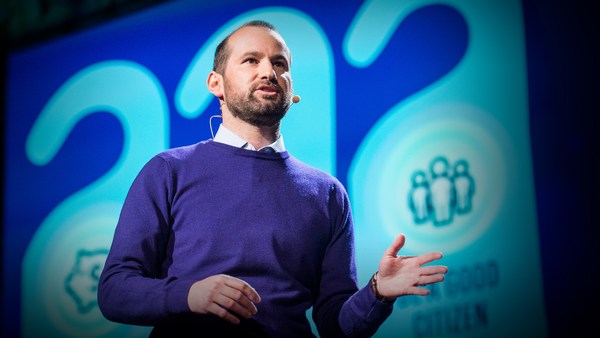Do we have what it takes to reach net zero? I don't mean this in a philosophical way. Does humanity have sufficient grit and creativity? Do we have the political will? I mean, quite literally, do we have enough stuff? Cement, steel, glass, nuts, bolts needed to achieve net zero.
Because this is no small undertaking. Over the next 30 years, we're going to need to build 42 billion solar panels, 1.3 million wind turbines, 476 nuclear reactors, establish a hydrogen economy, overhaul our electrical grid and transform our transportation networks. This is a lot of money and a lot of labor, yes, but it's also just a lot of stuff.
So as governments set increasingly ambitious policy targets and businesses overhaul their operations, whether by carrots or sticks, we can't forget a fundamental question, is it even feasible?
I've been working on climate and sustainability topics my entire career. I started as a policy advocate and activist lobbying for stronger policy interventions and later as a scientist and an engineer, only to come to the conclusion that those industries, while very important, move so slowly. I'm not a very patient person and climate change demands urgent action. So I made my switch to the business sector, where we have both the resources and the agility to effect climate change on the necessary time scales.
Among the highlights of my career has been working at the BCG Henderson Institute, BCG's think tank. There, our research team studies how to increase the speed and scale of the energy transition by looking at the transition economy as a system. Underpinning our research is this idea that it's not just one sector that's going to need to transform, but all of them. You know, it's not just wind or automotive industries. These sectors are transforming in parallel and we need to look at this holistically.
So let me give you an example. If we wanted to answer this question, can we achieve net zero, do we have enough stuff for just the wind sector? Classically, you might approach this question by looking at all the materials you need to make a wind turbine and then comparing supply and demand. And what you would see is that maybe through 2030 you'd see some scarcity in carbon fiber, possibly terbium, but it's really unclear once you get to the bottom of the list. Once we start factoring in the rest of the economy, the picture looks like this.
There are 14 materials that would face scarcity in the wind energy supply chain through 2030 once we account for the full economy. I don't know about you, but I found these results staggering. It's exactly this type of perspective that we need to bring to policymakers to make informed decisions and to bring to investors so that they're investing in clean technologies that will actually have meaningful impact.
Now, you may be wondering, you know, isn't this just one scenario, right? There are many pathways that you could take to reach net zero, and in fact, there are hundreds of design choices that go into each of these individual technologies.
So to show you what I mean, we have a few different solar panels here mounted in different ways. You can see this picture on the bottom left uses cement. Some of the others do not. Whether they're mounted on the rooftop or on the ground will influence things like the number of inverters you need per gigawatt.
So what happens if we start factoring in actual design choices? Our team wanted to do this, so we ran a modest 6,000 experiments where we varied not only the amount of solar and wind in our net zero scenario, but individual design choices.
So for our solar panels, we looked at whether they were made from crystalline silicon or thin films, whether they were framed in aluminum, whether they had a glass backing and whether they were mounted on the roof or on the ground. And we varied similar parameters for the wind sector. What we found was that 45 percent of the materials needed to build solar and wind panels could face scarcity through 2030 under every scenario we tested. Some of the materials we expected, right? Things like cobalt or rare earth metals have been in the news for a long time, but others were a lot more surprising. No one's talking about aluminum or carbon fiber.
For every decarbonization pathway, the mix of technologies down to small design choices can sway our ability to achieve net zero. And for businesses, what this necessarily means is that they're going to look for substitutes as they try and overcome these scarcities. But those substitutes and those transformations can lead to more scarcity.
So ... We can do a thought experiment. Say we had a scarcity in carbon fiber. It's used to strengthen the wind turbine blades. A logical substitute here is fiberglass. The fiberglass market is quite large, it could easily absorb additional demand coming from the wind sector. But to make fiberglass, you need boron, and boron is becoming increasingly used throughout the energy transition. It goes into rare earth magnets that are used in EVs and wind turbines. It goes into boron steel in the automotive industry, it goes into borosilicate glass in certain types of solar applications. So as we increase demand for fiberglass, we may put strain on boron supplies.
So maybe we just increase the supplies. Well, as it would turn out, there's only a few countries that mine boron. Seventy-three percent of known reserves exist in Turkey. And to open a new mine, that's a 20-year process. So yeah, we could replace carbon fiber with fiberglass, but it could have implications for the entire economy.
And this is just one material. For all of these technologies, there's hundreds, maybe even thousands of components to consider.
So ... I could give you another example, right. So if the wind example didn't resonate, we could talk about lithium ion batteries. They are skyrocketing in demand driven by electric vehicles and grid scale storage. The anode material that goes into a lithium ion battery is typically graphite. We would pretty much need to double graphite supplies by 2030 to achieve net zero. The graphite anode supply chain is dominated by China. They control 100 percent of battery-grade graphite. So there are a lot of people looking to expand supplies of graphite, but there's also substitutions that are under research. Scientists are exploring the alternative of using silicon as an anode material. But this not only creates a new opportunity for silicon producers, but could put pressure in semiconductor and solar panel industries.
OK, thrown a lot at you, so just to check that you're following. Achieving net zero is going to take a lot of stuff. That stuff is going to increase our demand, could lead to scarcity and businesses will respond through substitution.
But there's one more thing I'm not sure you caught. Somebody's going to get rich. That somebody could be you.
(Laughter)
For businesses big and small, the energy transition creates the single largest industrial growth opportunity since the Industrial Revolution. The energy sector that was once dominated by two fuels is now experiencing fierce competition among a broader range of climate technologies. The materials and components that go into these could gain a share in trillion-dollar energy economy.
And it's not just rare earth metals and clean tech. We're talking about commodities. I mentioned aluminum a little bit earlier. This is an industry that has been stagnant since the 1980s. But if we take our approach to net zero seriously, they will see a boon in their industry. It's used in solar panel mounting hardware and frames. It's used in conductors for the electric grid. It's used to lightweight electric vehicles. It can also replace other scarce materials like copper, thereby seeing increased demand through substitution.
And it's not just aluminum, we're seeing this trend for certain grades of steel, for silver, for epoxy resin.
There's also opportunities that exist by entering new markets. So we could say for an example, perhaps you are a manufacturer of automotive parts. You may think that the electric vehicle industry is going to be the death of your industry. But the same skills and labor that go into manufacturing parts for a gas car translate incredibly well to the wind energy sector, where wind turbines require thousands of mechanical parts. Getting a foothold in that supply chain could diversify your product portfolio and lead to new revenue opportunities.
Or say you make lubricant. There's an opportunity for you, too. There's two drivetrains that are common in wind turbines. One uses magnets that are becoming increasingly rare, and one is mechanical design. As rare earth magnets become more scarce, the industry will likely shift to mechanical alternatives, which will need more lubricant.
We'll also see an expansion in infrastructure. The offshore wind industry is going to need ports that can store enormous components. It's going to need ships that can erect skyscraper-sized wind turbines in the ocean. Those ships are going to need new engines that can burn alternative fuels like methanol and ammonia. In fact, ammonia demand is expected to double through 2030 and triple by 2050.
That extra ammonia is going to need storage. So if you're a chemical storage tank producer, this is an opportunity for you too.
And I haven't even touched the surface on the finance sector, the education sector, construction, logistic services that are all going to experience increased opportunities as we achieve net zero.
Now, I think it's important to take a pause here to note, I'm not advocating for more consumption on our pathway to net zero. And I think it's really important to acknowledge that clean technologies can come with their own environmental and social costs. We're going to need to be really thoughtful about how we do this.
But these opportunities can also lead to innovations in new and different ways, right? Better processes, better use and recycling of materials. The LED light bulb is a really good example here. This is a technology that reduces our energy use, but also saves consumers money and uses a fraction of the materials that go into a CFL or an incandescent bulb.
Achieving net zero is not going to be easy. The timelines are incredibly tight, and given the complexity involved, it's going to require collaboration from both the public and the private sectors. But this also provides an opportunity for innovation and for growth.
I mentioned at the beginning of my talk that I am interested in the business sector. I really do believe that this is where we are going to see solutions to climate change happen. I want you to get rich and to innovate and to grow, because this is how we reach the speed and scale we need to achieve the energy transition. After all, someone has to make the stuff needed for net zero.
So I'll leave you with one final question. What opportunities lie ahead?
Thank you.
(Applause)





